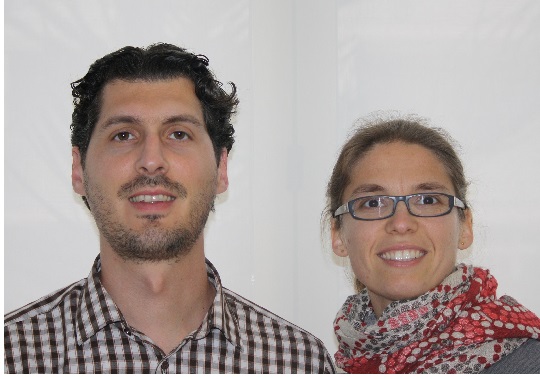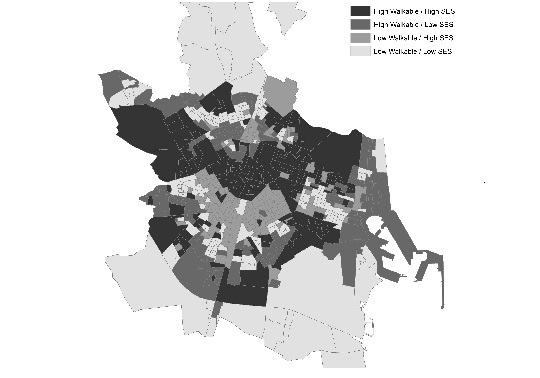
An international work in which the Group of Investigation in Physical Activity and Promotion of the Health (AFIPS) of the University has participated, has concluded that people between 14 and 18 years who live in neighbourhoods of Valencia with better socioeconomic level and better urban conditions spend 50 minutes less per day to sedentary behaviours and perform more physical activity. The study also explains that those who live in neighbourhoods with a lower educational level are 10% more likely to suffer from obesity or overweight.
Ana Queralt, researcher of the Faculty of Nursing and Podiatry, and Javier Molina García, from the Faculty of Teacher Training, have participated in a research that has analysed how the characteristics of the urban area where youth live affect their lifestyle and their health.
For this research, they have used two indicators: on the one hand, the socioeconomic level; and on the other hand, walkability, understood as the relationship between population density, the connection between streets and the diversity of services and destinations, such as parks, sports facilities, leisure areas or shopping centres in an urban area. Molina y Queralt understand a healthy neighbourhood as that densely populated, which offers many services and possible destinations where to move and where the streets are very connected to each other.
The study, published online, explains that people who live in neighbourhoods with a lower educational level are 10% more likely to suffer obesity and overweight. These results would be in agreement with previous investigations that have already demonstrated that the incidence of obesity is higher among people with more unfavourable socioeconomic levels.
The research group of which Molina Garcia and Queralt are part, Physical activity and Health Promotion Group, has worked with researchers from Arizona State University and the University of California, San Diego.
According to Javier Molina García, the innovation in this study is “the evidence of a statistical association between the type of neighbourhood where teenagers live, their weight and their lifestyle. These findings are really relevant, since a sedentary lifestyle and physical inactivity are related with the incidence of diseases such as diabetes, heart disease or some types of cancers.
Methodology
In the work, partially funded by the Valencian Government, the level of physical activity, weight and height of the young people who participated were evaluated, in order to establish a relationship between the degree of obesity and/or overweight, and the quality and characteristics of the neighbourhood where they live. The fieldwork in institutes was performed between the years 2013 and 2015 on a sample of 325 people, aged between 14 and 18, from various neighbourhoods of the city of Valencia.
The study has analysed the city and shows how areas with greater walkability and higher socioeconomic status are located towards the centre and northeast of the city; the ones that present a high walkability and a low socioeconomic level, to the east and the south, above all; and areas with low walkability and high income are especially the south extension of the historic centre of Valencia.
Article:
Javier Molina-García, Ana Queralt, Marc A. Adams, Terry L. Conway, James F. Sallis. “Neighborhood built environment and socio-economic status in relation to multiple health outcomes in adolescents”. Preventive Medicine, volume 105, December 2017, page. 88-94. Accessible online, 31 August 2017.
doi: https://doi.org/10.1016/j.ypmed.2017.08.026
Caption:
Map showing the socioeconomic level and the walkability of the city of Valencia, elaborated by Physical activity and Health Promotion Group.
Images:










.jpg)










